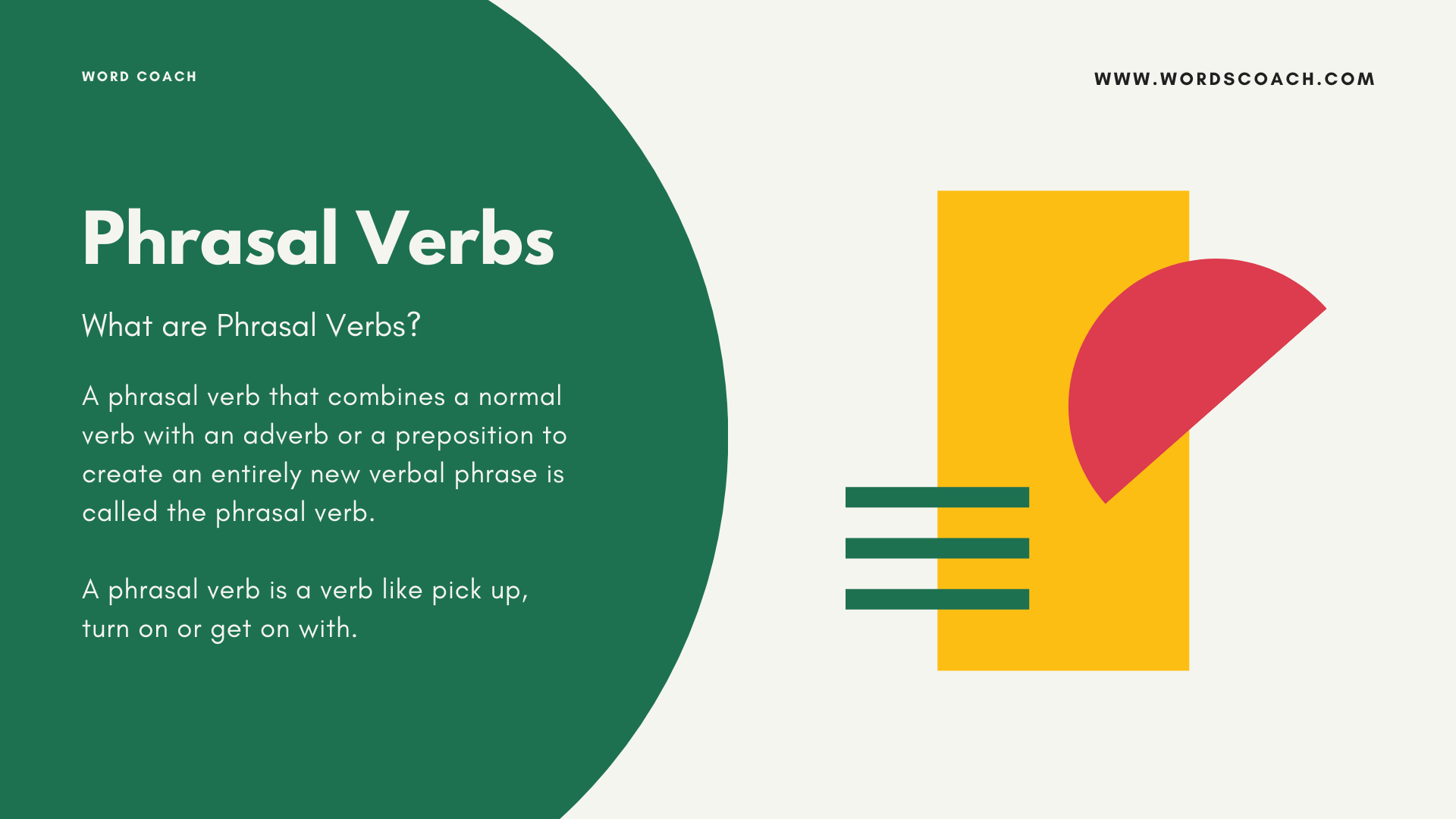What are Phrasal Verbs?
A phrasal verb that combines a normal verb with an adverb or a preposition to create an entirely new verbal phrase is called the phrasal verb.
A phrasal verb is a verb like pick up, turn on or get on with.
Phrasal verbs consist of a verb and a preposition or an adverb:
| Verb | Preposition/adverb |
| get | up |
| go | through |
| write | down |
| take | after |
Sometimes phrasal verbs consist of three elements:
| Verb | Preposition / adverb 1 | Preposition / adverb 2 |
| look | forward | to |
| put | up | with |
| sit | in | for |
You can see that there are three types of phrasal verbs formed from a single-word verb:
| Single-word verb | Verb | Meaning | Example |
| Look | direct your eyes in a certain direction | You must look before you leap. |
| Phrasal verb | Verb | Meaning | Example |
| verb + adverb | look up | to try to find a piece of information by looking in a book or on a computer | You can look up the word in a dictionary. |
| verb + preposition | look after | take care of | Who is looking after the baby? |
| verb + adverb + preposition | Look forward to | await eagerly | She is looking forward to visiting Paris. |
Types of phrasal verbs
- There are four types of phrasal verbs, divided into two pairs: transitive and intransitive; separable and inseparable.
- A phrasal verb can belong to only one of each pair, but keep in mind that all separable phrasal verbs are transitive.
Transitive phrasal verbs
Transitive phrasal verbs use a direct object, just like normal transitive verbs.
Examples:
- She looked at the magazine and then put it down.
- What a pretty dress! Why don’t you try it on?
- If you’ve got a good idea, bring it up at the meeting.
Intransitive phrasal verbs
- Intransitive phrasal verbs do not use an object.
Examples:
- My colleague and I get on really well.
- This car is terrible. It breaks down all the time!
- I don’t like to get up.
Separable phrasal verbs
- With transitive phrasal verbs, you can sometimes put the direct object in between the words, for example, “made up.”
- Sometimes, the preposition/adverb is placed either after the verb or after the object.
Examples:
- Mary made up a really entertaining story.
- They turned my offer down.
- I really like this dress. Can I try it on?
Inseparable phrasal verbs
- Inseparable phrasal verbs cannot be split up and must be used together.
Examples:
- The wayward son carried on without his father.
- I came across some old photos in a drawer.
- I had to run to get on the train, but I made it!

